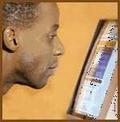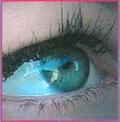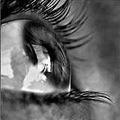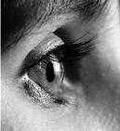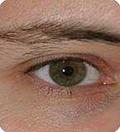|
Vision Theory Infomation
Vision Theory has gone through a lot of changes over the centuries. As we begin to understand the way the brain works, more and more theories are being put out. The biggest problem with the theory of vision is that unlike a video camera that records exactly what is in front of it, the way a person sees is defined by the way the brain interprets the visual images. Every brain is different, like a fingerprint, and there is absolutely no conclusive way to determine if what two people are seeing is actually the same thing. Colors, for example, can always be interpreted in different ways. When person A looks at the color purple he understands that he is looking at purple as his brain understands it. When person B looks at the same color, he will agree that yes, that color is purple, but in fact he could be seeing purple the way person A sees orange. They have both been raised to understand that the exact hue and 'color' of that imagery is defined as “purple,” and so they will always agree that it is the same color, even if their brains are interpreting the information differently. The history of vision theory goes back to ancient Greek times, where scholars proposed two separate hypothesis for the way vision works. The first hypothesis was called emission theory and proposed that rays were emitted from the eyes that were intercepted, or blocked, by an object. This theory is reminiscent of the way sonar works The second Greek vision theory was propagated by Galen and Aristotle; it was called intro-mission. Intro-mission was based on the idea that rays of information that represented a visual object were sent towards the eyes. A German scientist named Hermann von Helmholtz proposed one of the first modern vision theories after examining the eye and concluding that it was actually poorly able to process rays of light and was actually extremely ineffective.
In fact, he determined that the physical properties of the eye were so underdeveloped compared to the eyes of other species that vision would actually be impossible unless there was some type of unconscious assistance, and this is known as the unconscious inference vision theory. The Gestalt theory takes an entirely different approach and assumes that the brain decodes visual images based on patterns or groups. In this theory, there are six groups that the brain uses: Continuity, Symmetry, Similarity, Proximity, Common movement, and Closure. Recently, the Gestalt Theory has been largely disregarded, simply because it describes the way the brain interprets images, but it doesn't actually explain why it does so. Many researchers now believe that vision works on three different levels:
These basically cover recognizing an object, analyzing the object, and then implementing that analysis, which allegedly leads to a complete picture of the object. Although scientists are still unsure how the vision system actually works, protecting your eyesight is not so complex.

Subscribe to EyeSight Vision Care! , our monthly newsletter with in depth information to help you keep up to date on how to Protect Your Eyesight with a free bonus. Fill out the form below. You'll then receive an email asking you to confirm that you subscribed. You'll always have the option to unsubscribe at the click of your mouse. Vision Theory to Visual Process
|
More Information













